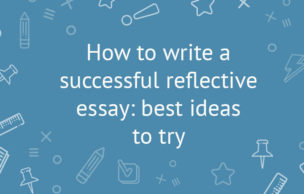How to Create an Essay Outline that Gets You an A+

Let’s take a simple situation — say, you want to build a house from scratch. So, you hire a bunch of workers and tell them to start. And they do. After a month of chaotic efforts, you blow all of your construction budget and don’t even have the foundation ready. Why? Because you did not invest any time in blueprints. How would your workers know what to do if you failed to provide them with a simple plan? Of course, not having a blueprint for a house is a sure recipe for disaster. But what does it have to do with essay writing? Simple! Not having an outline for your essay is an equivalent of not having a blueprint for your house.
Why do you need to structure and outline your essay
An essay, even a short one, is an academic work, and any academic work requires a careful, meticulous approach. Coming up with an outline before you get down to writing can be one of the most useful tools for organizing your ideas and structuring your thoughts in the most coherent manner. Think of it this way: a quality essay paragraph covers 3-5 relevant points. And, a typical essay consists of five paragraphs. So, a student should cover 15-25 different points per essay. In other words, keeping track of the ideas and making sure each new point logically follows the previous one can be a challenging task. And that is exactly where an essay outline comes in handy.
Creating a logical essay structure
Sure, the content of the essay depends on the type and the topic of your paper, which in its turn, affects essay structure as well. It would be pointless to compare argumentative and character analysis essays because they deal with totally different aspects, and so, require a totally different structure. However, most essays still follow more or less the same logic, and it is not difficult to grasp the essentials of outlining any academic paper. When it comes to paragraph content, it is common to focus on several important points in every section. An introduction, for example, should something like this:
Introduction
- Hook statement (your introductory statement which can be either a background fact or a funny attention-grabber, depending on the topic)
- Brief presentation of the main arguments (these are the arguments you will supporting in the main body of your paper, so you have to choose the number accordingly)
- Body Paragraph 1 Introductory Statement
- Body Paragraph 2 Introductory Statement
- Body Paragraph 3 Introductory Statement
- Thesis (carefully researched, relevant, and arguable)
The length and the depth of the introduction will surely depend on the essay subject, but in most cases, a couple of sentences per each point is acceptable. To be more precise, the first part (hook statement) can usually be expressed in one sentence. The second part will be a bit larger because it will focus on the main arguments of the paper. Here, two or even three sentences are quite acceptable. Finally, the thesis statement should be expressed in just one sentence. Later on, your entire research will be based around this single sentence.
But of course, the intro is not all it takes to get an A+ for your essay. Coming up with a detailed plan for the body paragraphs is even more important because essay body is the part where the students present their logic. So, these paragraphs should run smoothly and should convey the ideas that support your thesis. Here is how an essay body structure looks like:
Body Paragraphs
- Topic Sentence (one sentence that introduces the gist of the paragraph; from it, the reader should understand what you are planning to discuss further)
- Argument (it is a presentation of a theory that supports your topic statement and your thesis; an argument can usually be expressed in 1-2 sentences)
- Evidence (every argument needs evidence; otherwise, it will look invalid. Here, the writer is to present proof from credible academic sources; it is also a nice idea to describe an opposing view and mention the counterarguments against potential criticism. Limit yourself to 2-3 sentences in this part)
- Concluding statement (this part highlights the importance of the main argument, discussed above. Concluding statement wraps up the main points of the paragraph and, ideally, makes a logical transition to the new body paragraph).
The same logic applies to all of your subsequent body paragraphs. And, given that there will be at least two more of them, the length of the paper will increase significantly. So, try not to write down detailed sentences in your outline. Focus on the main point you are trying to make — there will plenty of time to polish your ideas later when you sit down to write. Remember, an outline is just a plan of your future paper. It should be easy to understand, but it is still just a sketch. So, keep it short and to the point.
Finally, do not neglect the importance of your conclusion. After all, this is the part where you wrap up all of your thoughts and ideas. In the conclusion, you are to sum up as many points as you possibly can; at the same time, you are to keep it brief. But the most important thing in the conclusion is to recap your thesis statement. Here is the best way to craft a great outline for the concluding part:
Conclusion
- Thesis restatement (the first sentence of the conclusion is the last sentence of the introduction — rephrased, of course. When recapping your thesis, you are to focus on its importance)
- Recap main arguments (highlight the significance of the arguments you made in your body paragraphs. Explain once again how these arguments are related to your thesis statement).
- Wrap up (this is the part that concludes your paper. It highlights the value of your findings, explains the significance of your thesis and your main arguments and focuses on how these findings can be useful in the real world; limit yourself to just 1-2 sentences in this part).
Now, a bit of Math. If you stick to the five-paragraph essay structure, your introduction will have 3 segments, body — 12 (4 in each of the three paragraphs), and the conclusion will include 3 more segments. In total, your essay outline will have 18 separate segments, or main points. The goal behind these 18 segments is to help you keep track of your essay logic as you sit down to the actual writing.
Essay Outline Sample
Sure, sometimes, there is simply no time for essay outlines; especially, when submitting a draft is not an optional step in your college. So, it is not surprising that some students would rather entrust this chore to another writer, as long as he/she is competent. If that is the case with you, take a look at our sample — it should give you a pretty clear idea of what a quality essay outline looks like. This is going to be a compare/contrast paper on marijuana legalization.
Benefits and Dangers of Marijuana Legalization
Introduction
- The debate about marijuana legalization.
- A brief overview of cannabis and its social history.
- Thesis
- For example: Even though the issue of governmental control over cannabis has an upside and a downside, the pros of legalization for the society outweigh the cons.
- Topic sentence on the pros of marijuana legalization.
- Medical use of cannabis for terminally ill cancer patients.
- Police budget reduction wasted on monitoring the use of cannabis.
- Stats from an article that support statement #2.
- Stats from an article that support statement #3.
- Concluding statement that highlights the benefits of marijuana legalization.
- Topic sentence on the cons of marijuana legalization.
- Potentially promotes procrastination and enforces stoner stereotypes.
- May affect performance and disciple in the workplace and academe.
- Stats from an article that support statement #2.
- Stats from an article that support statement #3.
- Concluding statement that highlights the drawbacks of marijuana legalization.
- A topic sentence about the benefits of police budget reduction.
- Sentence highlighting other weak areas in the economy where saved costs could go to.
- Evidence in favor of statement #1.
- Even though marijuana legalization may promote stoner stereotypes and lead to procrastination in the workplace, studies have shown that cannabis also boosts creative thinking skills.
- Evidence in favor of statement #2.
- Concluding statement that highlights social benefits of marijuana legalization.
- Thesis reformulation: as seen from the data above, the social benefits of legalizing marijuana way outnumber the potential hazards.
- Restating legalization pros: medical use, lower police budget, creative skills boost.
- Restating legalization cons: stoner stereotypes, procrastination in the workplace.
- Restating the budget cost analysis and its benefits.
- Marijuana legalization will lead to a major social change. Like any important innovation, it will bring some positive and some negative shifts to the world as we know it. However, despite never-ceasing debates on the subject, and a variety of valid arguments for and against cannabis legalization, it is possible to conclude that, in the long run, the change will have a highly positive effect on social well-being.
Essay Writing Tips from Our Pros
This article describes how an outline can help you deal with your homework, but fails to mention that an outline can also be incredibly useful during an exam. Since tests are usually time-limited, crafting an outline may seem like a waste of time. The truth is quite the opposite! Coming up with a quick plan for AP or IB essay will help you structure your thoughts in the most persuasive, logical, and coherent manner. This, of course, will positively affect your grade.
My tip: dedicate about five of your precious exam minutes to sketching your paper structure. Start with the thesis — this is the most crucial part. After, break your thesis down to 3 main arguments. You will support them in the body of your paper.
Once you come up with the main arguments, it will not be hard to add a couple of sub-points to each of them. Since your time is limited, you can write down everything that comes to mind in your essay outline. As you write, you will get rid of the unnecessary details. And, of course, you can add points to make your reasoning even more coherent. Remember, five minutes is all it takes to come up with a sketchy outline for your exam essay. But, your AP or IB grade may improve significantly so these five minutes may be well worth the trouble.
Need a hand with your essay outline?
Sure, even after reading this article, you may still need help with creating your essay outline. After all, you may simply lack time to complete this assignment on your own. The goods news is that you already came by a great essay writing service that will gladly give you a hand with your paper outline. Elite Essay Writers is a team of qualified professionals that have already helped thousands of students craft a wide range of A+ essays. If you are worried about your writing skills or simply want to spend your time doing something a bit more enjoyable than structuring your essay outline, let us take it off your hands! The prices are more than reasonable, so the benefits of entrusting your paper to us are quite obvious!





